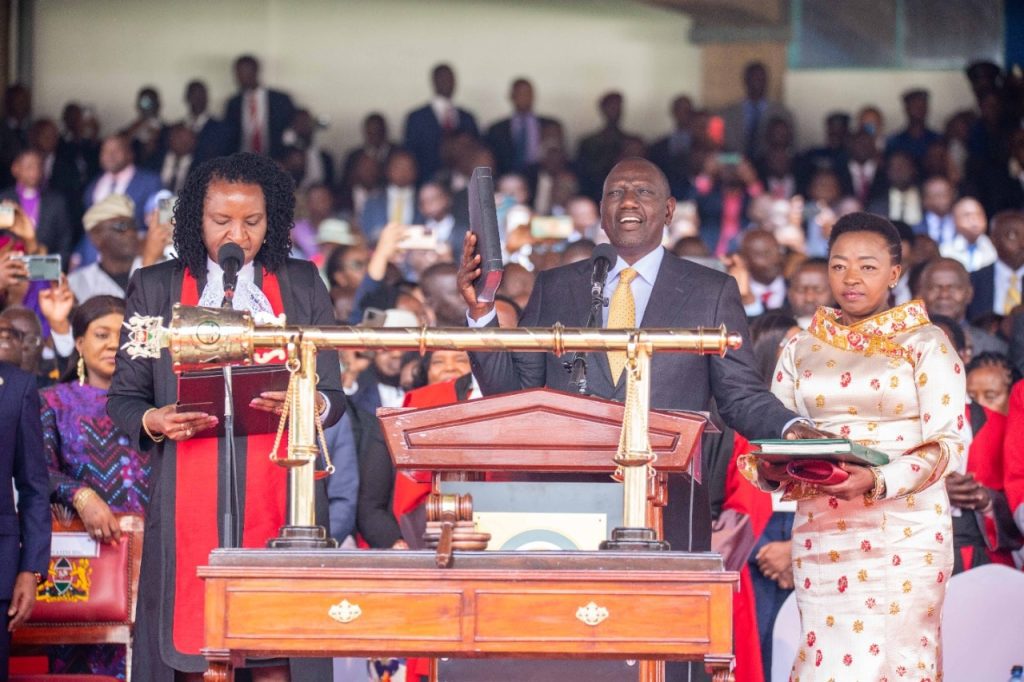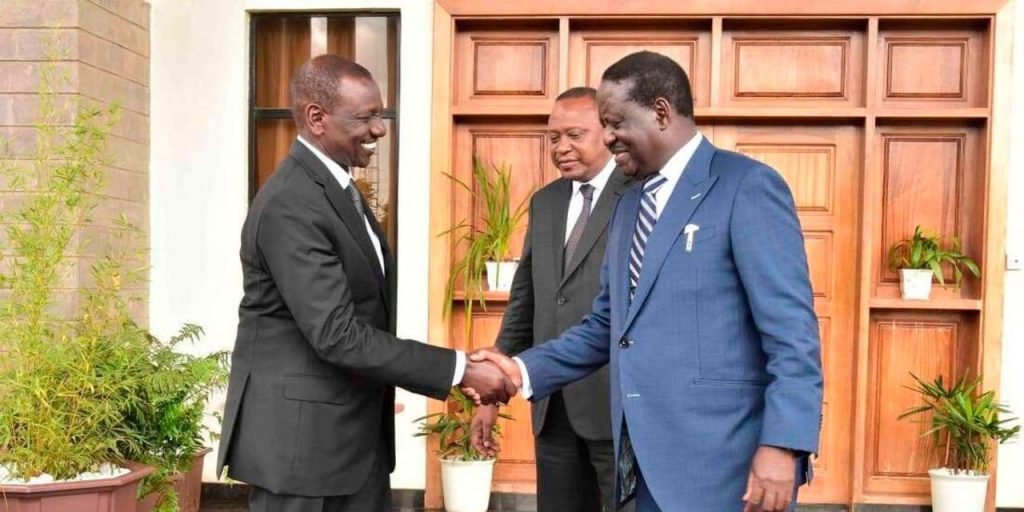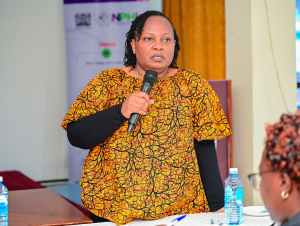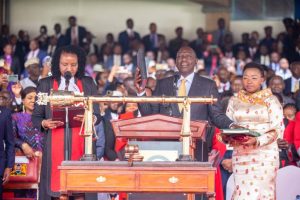Ruto’s Road to 2027: Can He Secure a Second Term Without Mt. Kenya’s Vote?


By Fwamba NC Fwamba
As the 2027 elections approach, one of the key questions dominating Kenya’s political discourse is whether President William Ruto can secure a second term without relying on the Mt. Kenya region, a historically vital political constituency.
Given the region’s immense influence, particularly in national elections, it is worth exploring the changing political dynamics and whether this once-reliable bloc of votes can still be considered key to Ruto’s success.They say a day in politics is long enough to change a lot of things.We are three years to the 2027 elections.
Mt. Kenya has long been seen as a political kingmaker, a region whose votes could make or break a presidential candidate’s chances. However, in recent years, especially during the 2022 elections, the region’s voters have exhibited a more pragmatic approach to politics. This shift has been driven by a demand for tangible returns, such as infrastructure development, better economic prospects, and political empowerment.
In 2022, despite Ruto’s falling out with former President Uhuru Kenyatta, he managed to garner significant support from Mt. Kenya. This was due to his ability to appeal to the region’s growing desire for economic growth and political influence, rather than relying on emotional or traditional loyalty to the Kenyatta family. As the current government continues to implement development initiatives, particularly in infrastructure, Ruto’s administration may well maintain a strong foothold in the region, as voters prioritize concrete results over symbolic gestures.
Mt. Kenya is politically diverse, divided into Mt. Kenya East and Mt. Kenya West, each with its own historical context and political inclinations. Traditionally, Mt. Kenya East has been politically underrepresented at the national level.
However, the rise of Deputy President Kithure Kindiki, a prominent figure from the East, has significantly altered the political dynamics. Kindiki’s ascent to the deputy presidency has not only provided the region with a stronger voice but has also offered a sense of political empowerment. For many in Mt. Kenya East, this shift provides a compelling reason to remain aligned with Ruto, as his government has empowered the region through its policies, bolstering its political capital.
On the other hand, Mt. Kenya West has often been more fluid in its political affiliations, with leaders from this area displaying a more independent streak. Despite this, Ruto’s government has made notable investments in infrastructure and economic development, including roads and healthcare facilities.
The pragmatic political approach that characterizes the region suggests that, as long as Ruto continues to deliver on these promises, Mt. Kenya West is likely to remain in his political fold.
One of the most significant challenges that President Ruto faces as he seeks re-election is the fallout from his former deputy, Rigathi Gachagua. Gachagua’s controversial tenure has been marked by scandal, including his impeachment by the Senate, and a polarizing relationship with key figures in the Mt. Kenya region, especially former President Uhuru Kenyatta. Gachagua’s confrontational style and inability to form meaningful political alliances across the region have made him a divisive figure.
This unpopularity, compounded by his political isolation, leaves Ruto with a fragile former ally in Gachagua, particularly given that Gachagua’s impeachment and subsequent political fallout have eroded his influence within Mt. Kenya.

Ruto, Raila and Uhuru
Gachagua’s influence was mainly as a result of the position he held. With the position of Deputy President gone,his clout in real sense is debatable.
Given the pragmatic nature of the region’s electorate, it is unlikely that Mt. Kenya will be willing to follow a leader tainted by scandal,political infighting and disgraced through impeachment. This poses a significant challenge for Ruto, who will need to distance himself from Gachagua’s baggage and re-establish a more positive relationship with the region’s voters.
Despite his estrangement from Ruto since their fallout in 2022, former President Uhuru Kenyatta remains a key figure in Mt. Kenya’s politics.
His influence is rooted in both his presidential legacy and his deep connections with the region’s elite. While he has distanced himself from Ruto, recent gestures—such as public interactions with both Ruto and Kindiki—suggest that there could be room for a political realignment.
Uhuru’s endorsement in the 2027 elections could serve as a powerful symbol of unity for the region. Mt. Kenya voters still regard him as their political elder, and his support could signal a return to political stability. Additionally, Uhuru’s backing of Kindiki as the next generation of leadership could provide the necessary bridge for Ruto to maintain his hold over the region.
This realignment, however, is contingent on several factors, including the political dynamics within Uhuru’s family and his relationship with Ruto.
While Mt. Kenya is important, Ruto’s ability to secure a second term may depend on forging strategic alliances outside the region. The 2022 elections demonstrated that Ruto has been able to gain support from various regions, including Rift Valley, Western Kenya, parts of Nyanza, and the Coast.
These regions, which traditionally leaned toward opposition figures like Raila Odinga, have shown increasing support for Ruto, particularly after his victory in 2022.
In the lead-up to 2027, Ruto will likely need to expand these alliances, possibly by working with figures from the opposition, including Raila Odinga.
Given the fragmented nature of Kenya’s politics, a broad-based coalition—one that transcends the ethnic and regional divides—will be vital for Ruto’s chances of securing a second term. A united front, built on shared interests and collective development goals, could propel Ruto to victory, regardless of whether Mt. Kenya’s votes are fully behind him or not.
The question of whether Ruto can win without Mt. Kenya’s backing is complex, with no simple answer. While the region remains important, it is not the sole determinant of electoral success. The Mt. Kenya electorate’s pragmatic approach to politics—focused on development, economic growth, and political power-sharing—means that they are unlikely to back a candidate who does not meet these expectations.
Furthermore, the rise of Kindiki as a powerful political figure and the possibility of Uhuru’s endorsement in 2027 could strengthen Ruto’s position in the region.
At the same time, Gachagua’s unpopularity and the need for Ruto to repair his relationship with Mt. Kenya voters suggest that the President may need to rely on a broader coalition, including alliances with opposition figures, to secure a second term.
Ultimately, Ruto’s ability to unite Kenya’s diverse political factions and form a broad, inclusive coalition will determine the outcome of the 2027 elections. Therefore, while Mt. Kenya’s vote is significant, Ruto’s path to victory in 2027 lies in his capacity to transcend regional and ethnic divisions and create a coalition that resonates with the evolving political dynamics of the country.
Milton is a broadcast journalist in Kenya
The post Ruto’s Road to 2027: Can He Secure a Second Term Without Mt. Kenya’s Vote? appeared first on Kenya Today.






